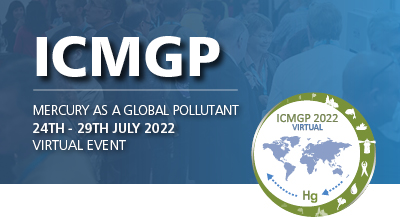| Abstract Title: | Mercury and Methylmercury Concentration and Distribution in Ribbed Mussels (Geukensia demissa) and Northern Quahogs (Mercenaria mercenaria) Across a Contamination Gradient |
| Presenter Name: | Gunnar Hansen |
| Company/Institution: | University of Connecticut |
| Session: | Special Session - Global mercury concentrations in biota: their use as a basis for a global monitoring framework |
| Day and Session: | Tuesday 26th July - Session One |
| Start Time: | 07:30 UTC |
| Co-Authors: | Gunnar Hansen,Zofia Baumann,Robert Mason |
Abstract Information :
Bivalves are important components of many coastal food webs, and are thus important links in the trophic transfer of contaminants. Yet, there are gaps in knowledge regarding patterns of bioaccumulation of methylmercury (MeHg) and total mercury (THg) bioaccumulation in these organisms. Specifically, little is known about how environmental pollution levels influence Hg distribution within bivalve soft tissue and if Hg distribution patterns vary between species. To examine these unknowns, we collected ribbed mussels (Geukensia demissa) and northern quahogs (Mercenaria mercenaria) from a Long Island Sound embayment (Mumford Cove) and ribbed mussels from the Hg contaminated Hackensack River. All samples were dissected to isolate the muscular tissues (adductor muscles and foot) and mantle, while the remaining tissue was pooled together (?viscera?). We measured both THg and MeHg and determined the distribution of both Hg species between the tissues. All tissues in Mumford Cove bivalves had similar THg concentrations causing the THg distribution to match the mass distribution. The MeHg concentrations were highest in the muscular tissue for both species resulting in the muscular tissue containing 42 ñ 7% of all MeHg accumulated in soft tissues in quahogs and 49 ñ 7% in of the MeHg in mussels. The Hackensack mussels had higher THg and MeHg concentrations compared to the Mumford Cove mussels in each tissue type. Despite this, both mussel populations had similar distributions of THg and MeHg between tissues. Additionally, both bivalve species, we found that >90% of accumulated THg in the muscular tissues was present as MeHg, but the %MeHg was lower in the viscera (55 ñ 17%) and mantle (65 ñ 18%). Our findings suggest that allocation of Hg into specific tissues is not related to pollution magnitude and, muscle tissue binds predominantly MeHg, while other tissues bind a higher proportions of inorganic Hg in both bivalve species.



